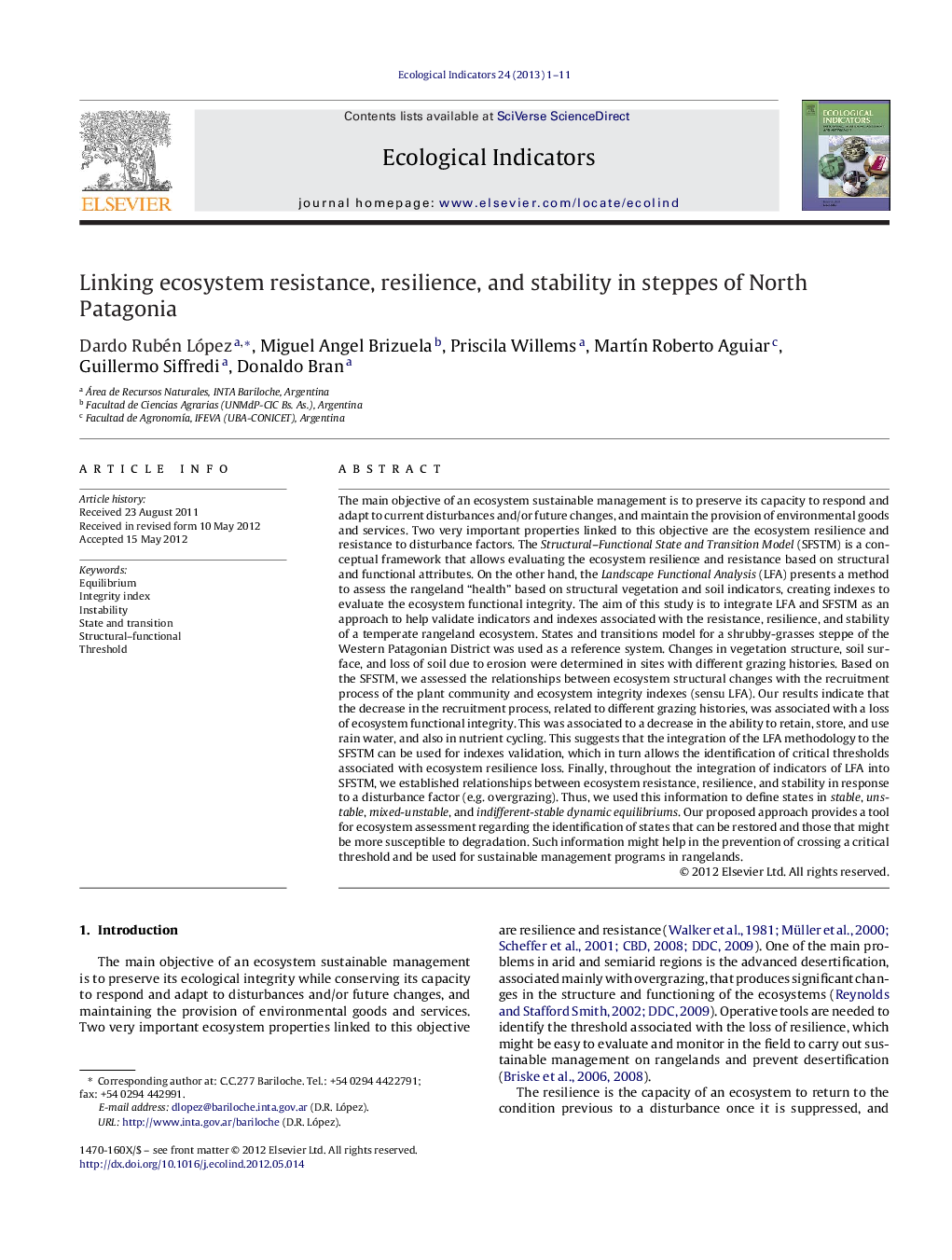| کد مقاله | کد نشریه | سال انتشار | مقاله انگلیسی | نسخه تمام متن |
|---|---|---|---|---|
| 4373614 | 1617176 | 2013 | 11 صفحه PDF | دانلود رایگان |

The main objective of an ecosystem sustainable management is to preserve its capacity to respond and adapt to current disturbances and/or future changes, and maintain the provision of environmental goods and services. Two very important properties linked to this objective are the ecosystem resilience and resistance to disturbance factors. The Structural–Functional State and Transition Model (SFSTM) is a conceptual framework that allows evaluating the ecosystem resilience and resistance based on structural and functional attributes. On the other hand, the Landscape Functional Analysis (LFA) presents a method to assess the rangeland “health” based on structural vegetation and soil indicators, creating indexes to evaluate the ecosystem functional integrity. The aim of this study is to integrate LFA and SFSTM as an approach to help validate indicators and indexes associated with the resistance, resilience, and stability of a temperate rangeland ecosystem. States and transitions model for a shrubby-grasses steppe of the Western Patagonian District was used as a reference system. Changes in vegetation structure, soil surface, and loss of soil due to erosion were determined in sites with different grazing histories. Based on the SFSTM, we assessed the relationships between ecosystem structural changes with the recruitment process of the plant community and ecosystem integrity indexes (sensu LFA). Our results indicate that the decrease in the recruitment process, related to different grazing histories, was associated with a loss of ecosystem functional integrity. This was associated to a decrease in the ability to retain, store, and use rain water, and also in nutrient cycling. This suggests that the integration of the LFA methodology to the SFSTM can be used for indexes validation, which in turn allows the identification of critical thresholds associated with ecosystem resilience loss. Finally, throughout the integration of indicators of LFA into SFSTM, we established relationships between ecosystem resistance, resilience, and stability in response to a disturbance factor (e.g. overgrazing). Thus, we used this information to define states in stable, unstable, mixed-unstable, and indifferent-stable dynamic equilibriums. Our proposed approach provides a tool for ecosystem assessment regarding the identification of states that can be restored and those that might be more susceptible to degradation. Such information might help in the prevention of crossing a critical threshold and be used for sustainable management programs in rangelands.
Figure optionsDownload as PowerPoint slideHighlights
► We propose an approach to assess the resilience and resistance of an ecosystem.
► A shrubby-grass steppe from Patagonia was the reference ecosystem of study.
► We assessed the relationships between ecosystem structure and its functionality.
► We defined four states: stable, unstable, mixed-unstable and indifferent-stable.
Journal: Ecological Indicators - Volume 24, January 2013, Pages 1–11